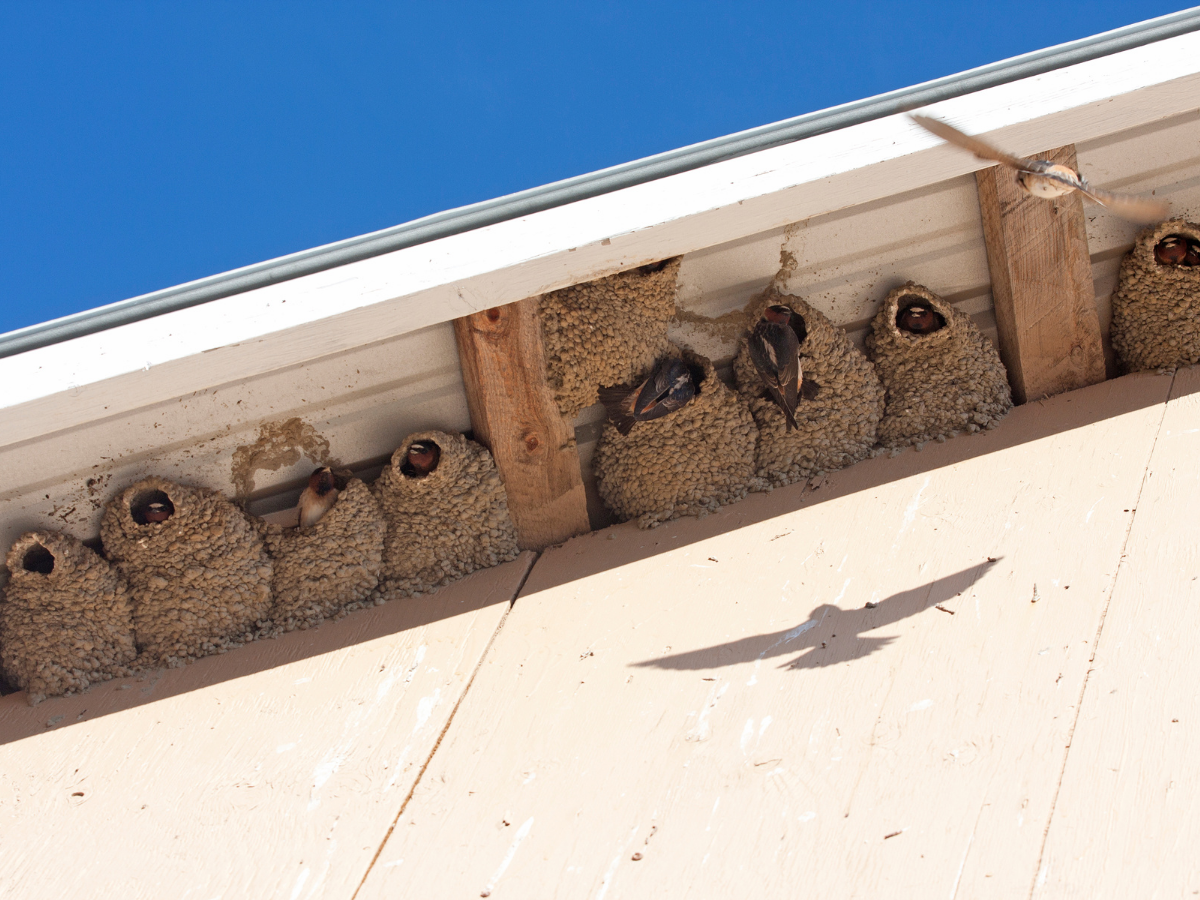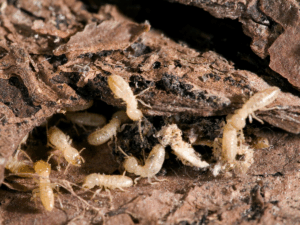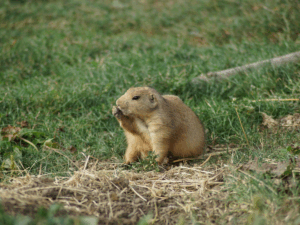If you’ve lived in San Diego for a while, chances are you’ve seen mud swallows darting through the sky during spring and summer. These small, sleek birds are known for their graceful flight and distinctive nesting behavior. While many people admire them for eating flying insects, homeowners can quickly become frustrated when mud swallow nests pop up on walls, under eaves, or around entryways.
Let’s take a closer look at these birds, why they may be causing problems around your home, and how to keep mud swallows away without breaking the law.
What Are Mud Swallows?
Mud swallows, also known as cliff swallows, are small birds with square tails, pointed wings, and pale undersides. They’re especially well known for their unique nesting habits. Instead of building in isolation, swallows nest colonially, meaning dozens—sometimes even hundreds—of them may gather together to build mud nests in close proximity to one another.
A typical mud swallow nest is gourd-shaped, with a small entrance hole. They’re made from mud pellets the birds collect and carefully cement together. Once they find a suitable nest site, the birds may return year after year to rebuild or reuse old nests. It’s common for a swallow returns to the exact same location each breeding season, which can make it difficult for homeowners to break the cycle.
Why Mud Swallows Can Be a Problem
Although mud swallows help control flying insects like mosquitoes and gnats, they can also cause headaches for property owners.
Here are the most common issues:
- Messy nests: Mud swallow nests leave behind mud stains and droppings on walls, patios, windows, and walkways.
- Health risks: Accumulated droppings can harbor fungi or parasites that may pose risks to people or pets.
- Structural damage: Large colonies can weaken walls, eaves, or stucco surfaces where nests attach.
- Persistent behavior: Because swallows often return to the same nest sites, getting rid of them once they settle in can be very challenging.
Legal Protection of Mud Swallows
Before you take matters into your own hands, it’s important to understand that mud swallows are protected under the Migratory Bird Treaty Act. This federal law makes it illegal to destroy active nests with eggs or young birds inside. The law exists to protect migratory birds and their habitats.
So, what does this mean for homeowners?
- You cannot remove or destroy nests during the breeding season if they are occupied.
- You can install deterrents or remove old, inactive nests once the birds have migrated away.
- The best strategy is to be proactive and prevent nest building before the breeding season begins.
How to Keep Mud Swallows Away
If you want to discourage mud swallows from turning your home into their nesting ground, prevention is key. Here are a few effective strategies:
1. Physical Barriers
Installing physical barriers like netting, bird spikes, or angled boards under eaves can make it impossible for swallows to attach nests. These methods are safe, humane, and long-term solutions.
2. Surface Treatments
Applying slick or slippery coatings on common nesting surfaces can make it harder for mud to stick, discouraging birds from building.
3. Visual Deterrents
Hanging reflective tape, windsocks, or predator decoys can sometimes deter swallows, though these are usually less effective than physical barriers.
4. Early Intervention
Keep a close eye on your property at the start of nesting season. If you spot swallows carrying mud, it’s a sign they’re about to build. Removing early attempts before nests are complete (and before eggs are laid) is the most effective time to act.
5. Professional Help
If a colony has already moved in, professional pest control companies like AgPest can safely assess your situation and recommend legal, effective solutions.
When to Expect Mud Swallows
Mud swallows in San Diego usually arrive in spring as part of their migration, beginning the breeding season around March or April. They often stay through summer before migrating south in the fall. Because a swallow returns to the same location year after year, dealing with the problem early is important if you don’t want them nesting in the same spots again next season.
Why Work With AgPest?
At AgPest, we understand the challenges that mud swallows bring to San Diego homeowners. Our team can help you:
- Identify problem nest sites
- Recommend safe, legal prevention strategies
- Install physical barriers to keep nests from forming
- Provide ongoing support to ensure birds don’t return in future seasons
We specialize in solving tough pest and wildlife problems in a way that keeps your home safe, clean, and compliant with wildlife protection laws.
Final Thoughts
Mud swallows are fascinating birds, but when they decide to turn your home into a nesting ground, things can get complicated fast. Between the mess, the potential health risks, and the strict protections of the Migratory Bird Treaty Act, knowing how to keep mud swallows away isn’t always simple.
The good news is, you don’t have to handle it alone. Whether you’re dealing with a few nests or a full-blown colony, AgPest is here to help with customized bird control solutions for your property.
Don’t wait for the breeding season to begin—request your free quote from AgPest today and protect your home from mud swallows before they settle in.



